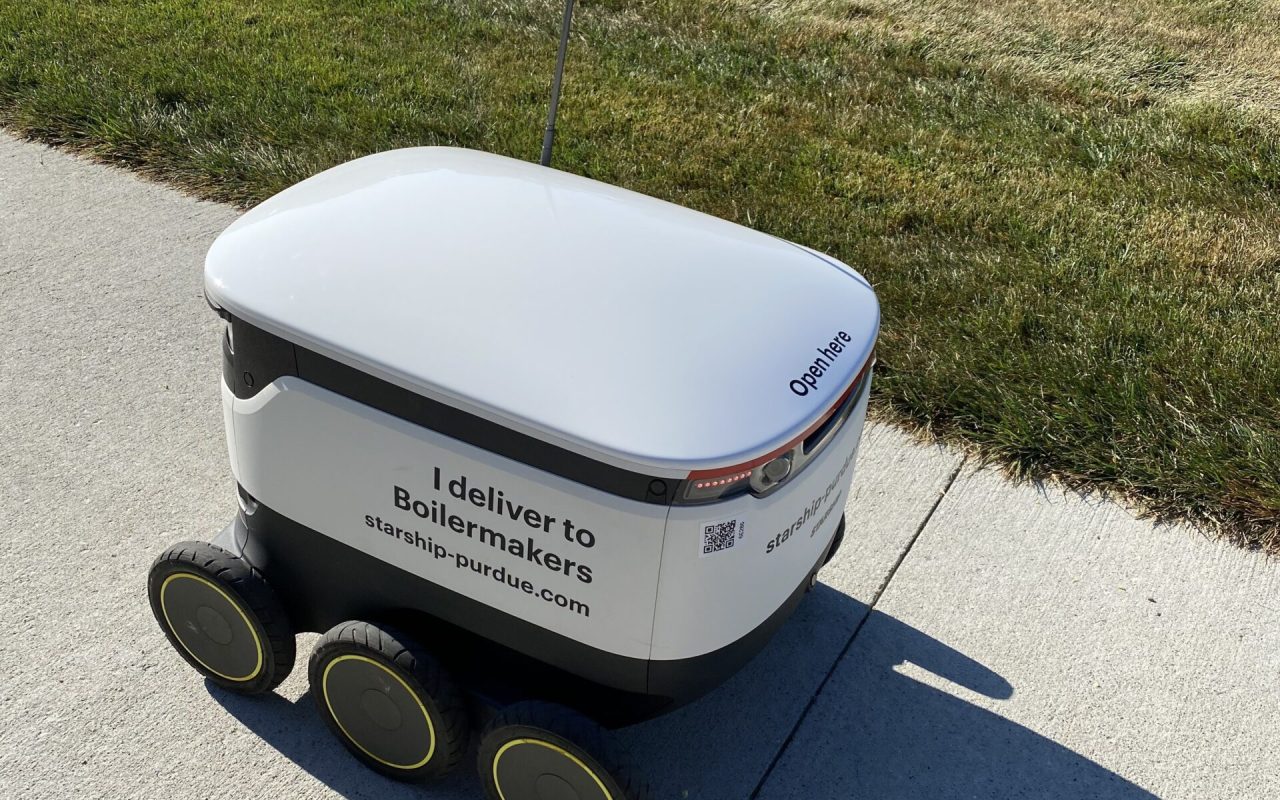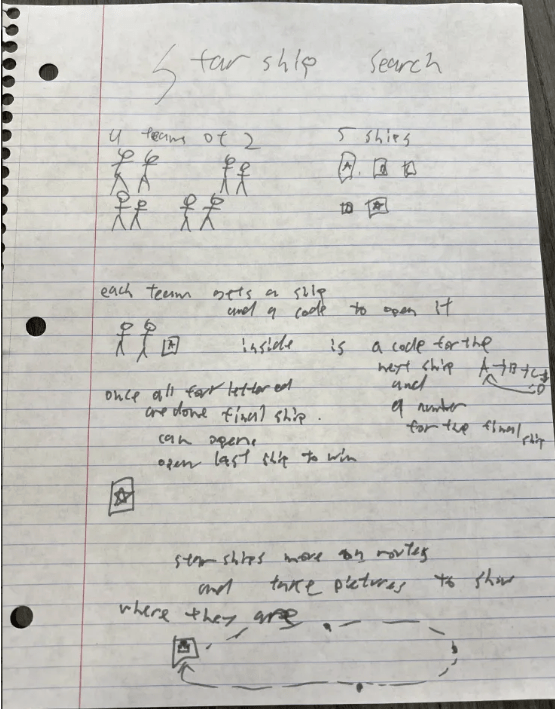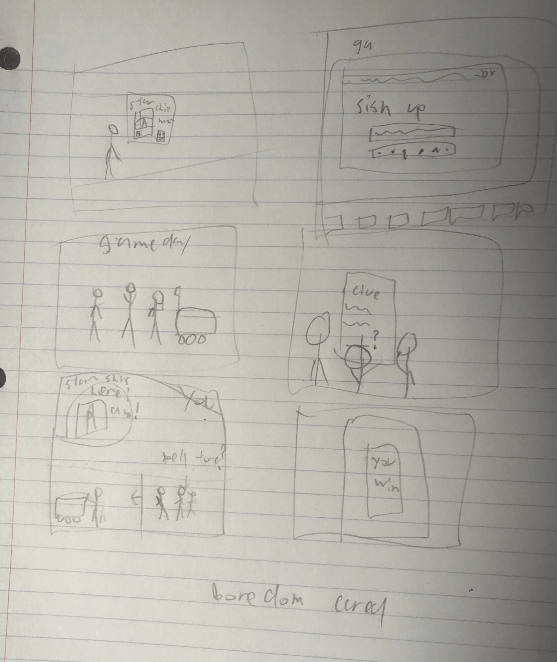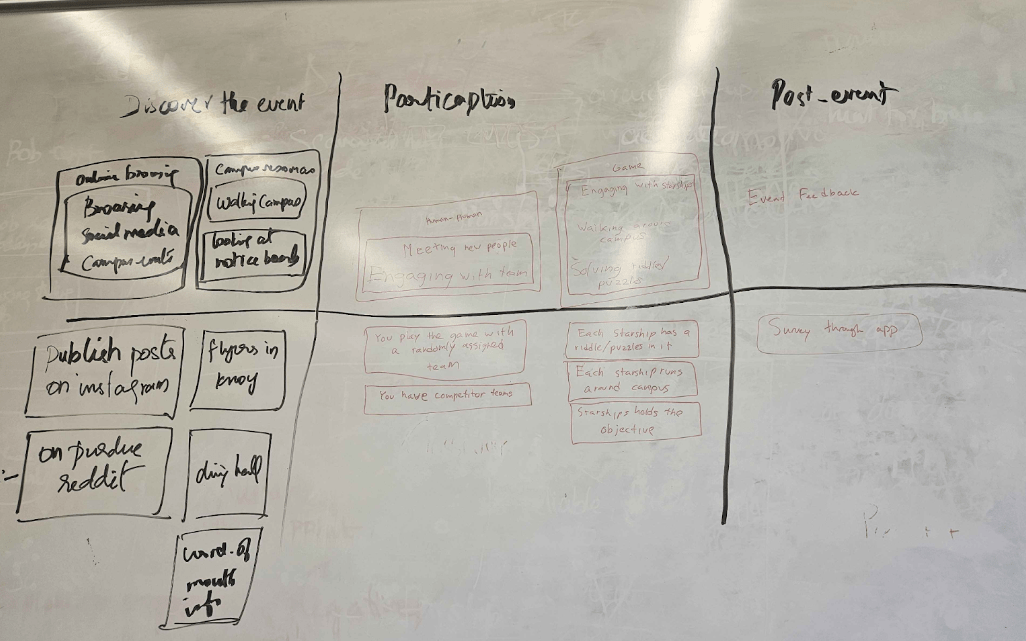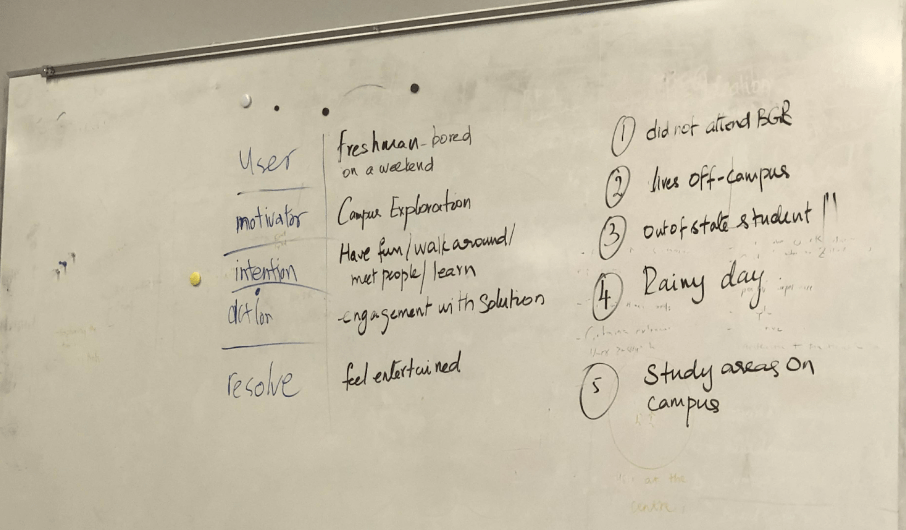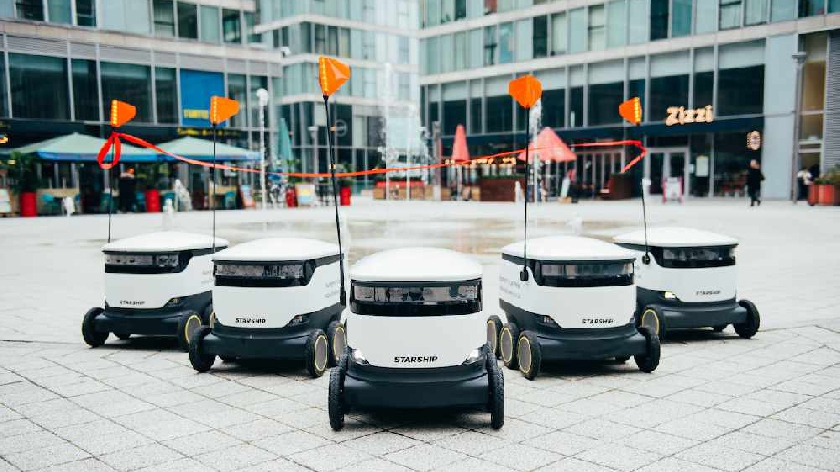Project 1: Starships
Project Type
UX Design
Timeline
September – October, 2024
The purpose of this project was to consider the current use cases, benefits, and limitations of Starship robots and to expand their application beyond food delivery. The goal was to design a new and innovative use case that leveraged these robots to enhance and promote human-to-human connections in a meaningful way.
Details
The first stages of the project consisted of background research and interviews. By doing so, my group and I were able to gain a deeper understanding of current Starship utilizations, their specs, advantages/disadvantages of similar services, and user opinion. Our solution was constrained to current physical functionalities of Starship robots in which their basic machinery and design could not be changed.
The initial hypothesis on why Starships were not frequently used were:
- They are too slow and unreliable
- They are too expensive
- There aren’t many food options available
Our focus for the interviews was to get a general list of why current students used or do not use Starships and their opinion of them on campus. The results were compiled into an affinity diagram where similar points were grouped together.
The overall consensus was the following:
- Have used Starships, but more so in the first years on campus
- Pretty reliable and decent arrival times
- They’re cool to see but could be more interesting
- Lack of some features on Starship
- Our interviewees said that an activity to get out and explore campus would be fun
As such, the initial hypothesis that Starships were too slow and unreliable was invalidated. We took this finding to form the basis of our solutions.
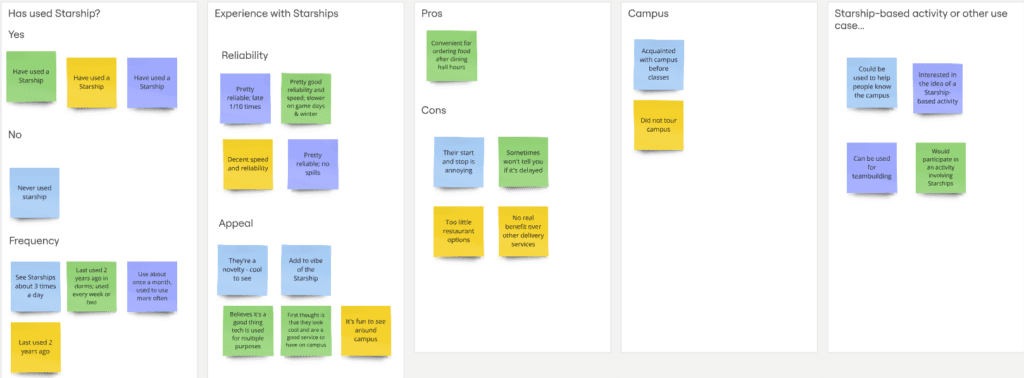
Ideation
Once enough research and data was gathered, my team and I moved on to the ideation stage and began brainstorming possible problem spaces to target.
Core areas:
- Boring/unengaging
- Games combat boredom
- Avoid repurposing delivery service
- Campus exploration
- Meeting new people and friends
From that, a list of ideas was generated:
- Social icebreaker
- Language learning buddy
- Campus automated tour guide
- Community greeter
- Amazing Race/Scavenger hunt event
- Trash collector
- Message delivery
- Mobile feedback stations
Once we narrowed down our idea list, the top choice was chosen for further prototyping and iteration – a scavenger hunt x The Amazing Race-style game. However, at this stage the design was still very much up for change.
The core idea was kind of a scavenger hunt. However, since we wanted the robots to be an integral part of the event, we mixed it in with the Amazing Race concept in which teams have to solve puzzles and stay active to reach the next stage. Like this, we take advantage of the Starship’s relatively reliable movement rather than just having them serve as stationary containers.
Part of the prototyping and design process involved making sketches, scenarios, mental models, and storyboarding. By doing so, we refined our idea to better fit the target audience of Purdue students (particularly freshmen).
Additionally, after our first solution was drafted, several user evaluations were conducted to determine the viability of the prototype and iterate based on feedback. One such change made from user evaluations was to physically make a participating Starship robot stand out from the rest to enhance appeal.
Solution
Our final solution is an adventure and exploration game that is a mix between a scavenger hunt and The Amazing Race. Our main user group includes students new to campus and students who are not aware of Starship features. However, it is applicable to any student who is bored and has free time over the weekend when events will be held.
The event begins with sign-up, where students receive event details via email and Starship displays. Students can enter with a premade team or be randomly assigned a team of 3-4 members. They also select a preferred date and time slot.
5 Starships, each decorated for visibility, will move within preset zones. Each team will be assigned one Starship and receive periodic 360-degree images to track it. On game day, up to 3 teams start per slot, each following a sequence of clues across 3 initial Starships. Teams must stay together to unlock each Starship, fostering collaboration.
After completing the first 3 Starships, teams locate and unlock the 4th Starship, then proceed to the 5th and final Starship to end the game. The first team to reach the final Starship wins, but all teams who finish receive a reward.
Reflection
This project allowed me to explore how Starship robots can be reimagined to foster human interaction and engagement. Interviews and observations changed my initial belief that Starships weren’t used due to poor reliability and slow delivery. Instead, people find them reliable and relatively fast. It was enjoyable to follow a Starship and observe its journey and decisions.
I believe my solution with the group leverages Starship’s strengths while promoting human connections and communication. It also raises awareness of Starships as viable delivery options rather than novelty items. Additionally, this project explored the utility of Starships beyond deliveries. My team and I addressed the feedback we received and believe our tweaked solution adequately meets the project requirements.
